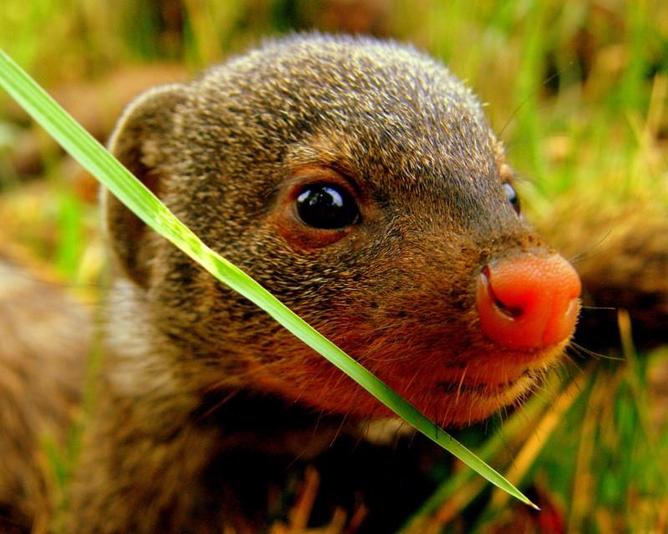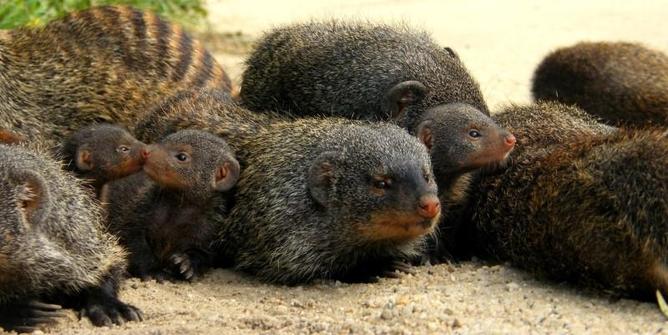
Stressed Out Mongooses Can't Cope with Baby Booms

This article was originally published at The Conversation. The publication contributed the article to Live Science's Expert Voices: Op-Ed & Insights.
Many of us know from personal experience that raising children can be stressful, but a new study reveals that stress can be enough to affect the quality of parenting – in mongooses, at least.
A recent study investigates the relationship between stress hormones and parental care in the banded mongoose, a small African mammal that lives in large family groups.
The research team found that individual banded mongooses that spend a lot of time caring for pups lose weight and have elevated levels of stress hormones (glucocorticoids). This in turn affects the care they can invest in subsequent litters of pups. A feedback loop is created between care and stress, with attentive care leading to stress, and high stress levels then leading to a reduction in care.
As is the case in humans, the decisions animals make will affect them later in life. In ecology this is called a “carry-over effect”. While this is a well-known concept in biology, little is known about the physiological mechanism that lies behind it. This study from Jenni Sanderson and colleagues shows stress hormones are likely to be responsible.
The mongoose is well-suited to the study because, unusually, it is a “cooperative breeder” that rears pups in large communal litters. Several females become pregnant at the same time and give birth together, down to the same night. The resulting litter of pups is reared communally by the group, with most adult members contributing something towards pup care.
Also unusual is that, after weaning, each pup from the communal litter forms a bond with a single adult (not necessarily the parent) known as an escort. This adult feeds its escorted pup, but also carries, grooms and protects it from predators. Some adults are diligent escorts, others less so, or choose not to escort a pup at all. By controlling for factors such as age, sex, and quality of the territory they live in, the researchers found that the care each adult gives varies considerably, suggesting that stress hormone levels may be the cause.
Sign up for the Live Science daily newsletter now
Get the world’s most fascinating discoveries delivered straight to your inbox.

This research is possible because of a 20 year long research project on banded mongooses living wild in Queen Elizabeth National Park in Uganda, following the lives of individual mongooses from birth to death. All the mongooses in the study are accustomed to the presence of researchers, so observers can stand just metres away and still be ignored by their subjects. They have even been trained to step onto portable electronic scales so that they can be weighed and body condition monitored – essential for a study such as this one. Hormone levels are monitored by collecting and testing their droppings.
The quality of care provided by escorts could have a huge effect on their pups: pups with good escorts get more food, grow faster and are more likely to survive than those with poor escorts. This stretches into adulthood, as better escorted pups start breeding earlier and so may have greater evolutionary fitness.
It’s not just about mongooses
The results of this study don’t only apply to mongooses, but are likely to apply to other species too (perhaps even humans). Links between stress hormones and reproduction have been shown in other species such as house sparrows. However, species where one or two parents care for offspring may differ from banded mongooses in their response to stress. For bi-parental species, stressed females may lead to smaller broods or litters, smaller eggs or young, or a reduced chance of conceiving. In contrast, carers in cooperative breeding species may have little ability to control what happens prior to the birth of the litter – instead stressed carers are limited to varying the care they give their pups.
These effects may also apply to humans. Stress hormones have been shown to interfere with the human ovulatory cycle. However, the complexities of the presence of siblings of different ages, different needs, and the many ways in which parents care for their children would make studying this effect in humans extremely difficult.
Hazel Nichols receives funding from NERC and BBSRC.
This article was originally published on The Conversation. Read the original article. Follow all of the Expert Voices issues and debates — and become part of the discussion — on Facebook, Twitter and Google +. The views expressed are those of the author and do not necessarily reflect the views of the publisher. This version of the article was originally published on Live Science.









